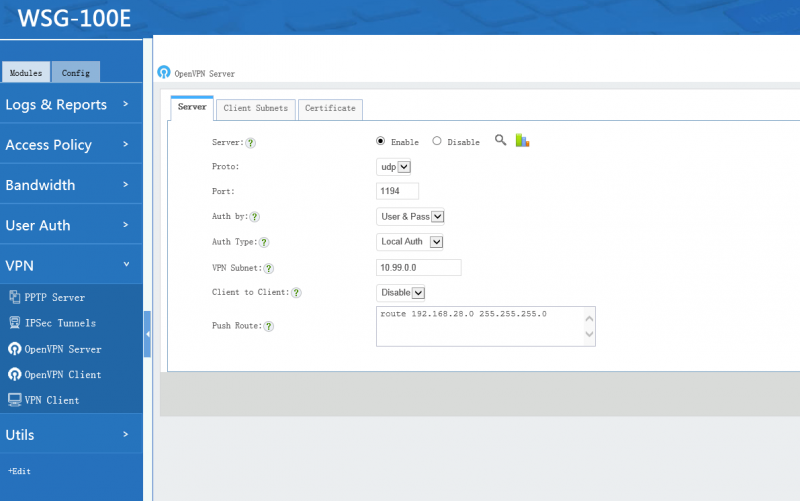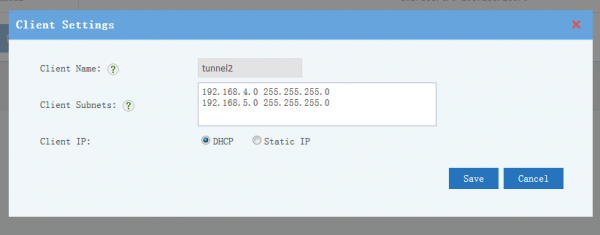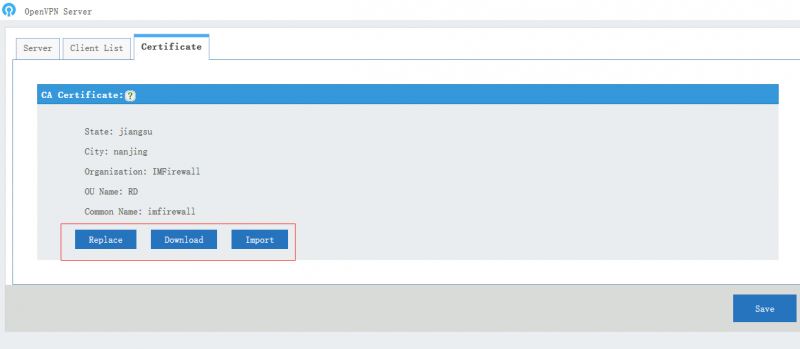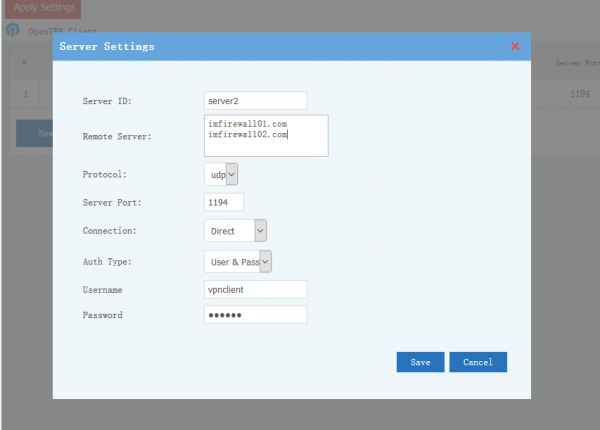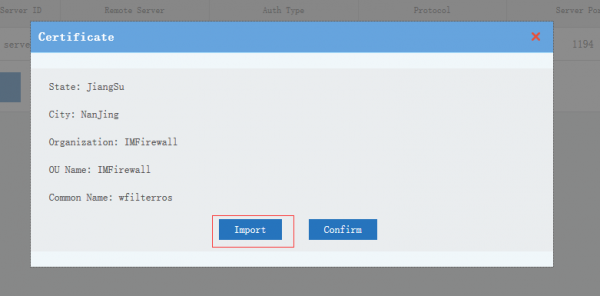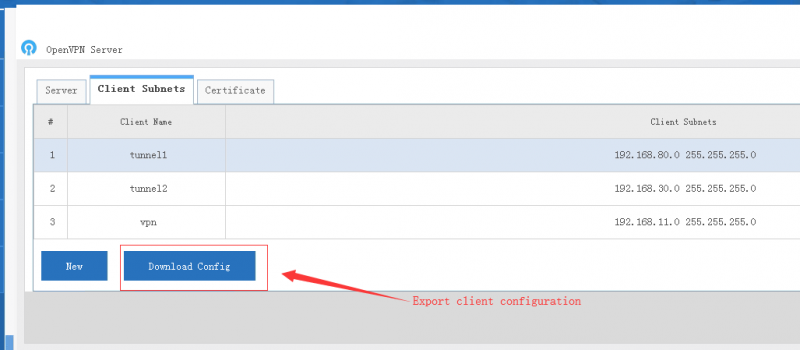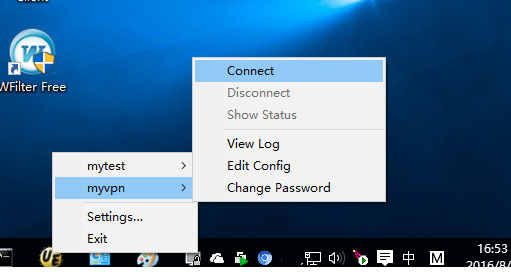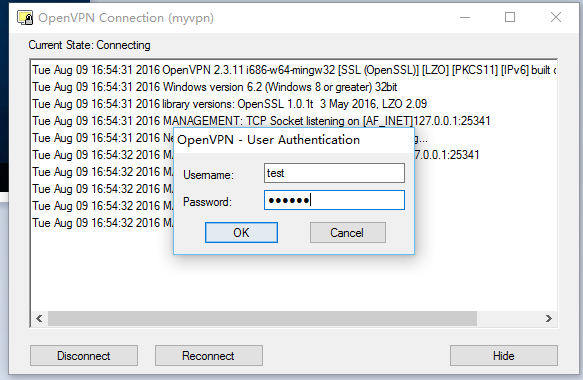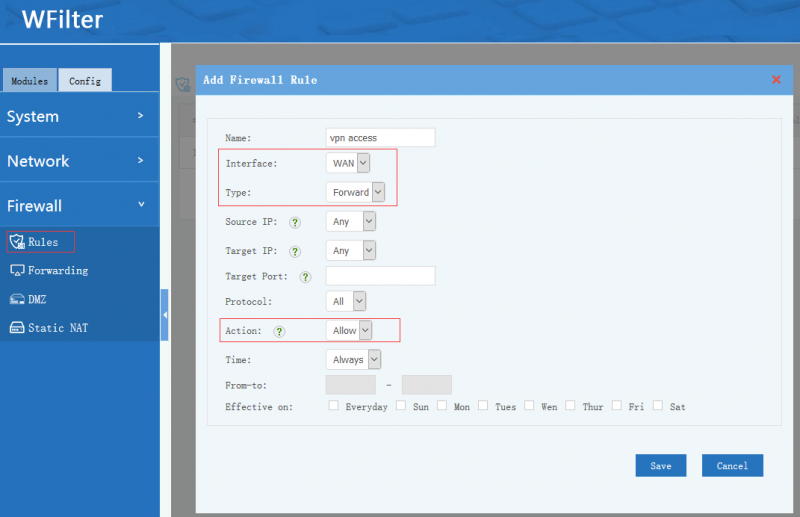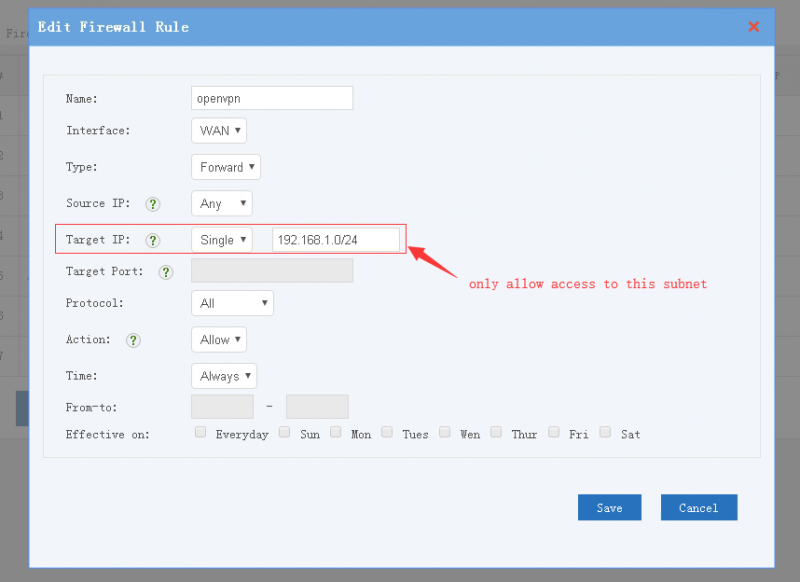Openvpn
From Wiki of WFilter NG Firewall
(Difference between revisions)
(→Server Settings) |
(→OpenVPN Client) |
||
| Line 58: | Line 58: | ||
[[File:openvpn_clientsettings2.png|600px]] | [[File:openvpn_clientsettings2.png|600px]] | ||
| − | |||
| − | |||
| − | |||
| − | |||
| − | |||
| − | |||
| − | |||
| − | |||
| − | |||
| − | |||
| − | |||
| − | |||
| − | |||
| − | |||
| − | |||
| − | |||
| − | |||
| − | |||
| − | |||
| − | |||
| − | |||
| − | |||
| − | |||
| − | |||
| − | |||
| − | |||
= Windows Clients = | = Windows Clients = | ||
Revision as of 10:42, 11 June 2020
Contents |
1 Introduction
- OpenVPN is an open-source software application that implements VPN based on SSL. These two modules can setup OpenVPN tunnels in WFilter NG Firewall.
- OpenVPN Server: provide VPN service for remote access and site-to-site VPN server.
- OpenVPN Client: VPN client to connect other OpenVPN servers.
2 OpenVPN Server
2.1 Server Settings
- Auth by: "by certificate" or "by user&pass".
- Users & Pass(recommended): authenticate by user & password, only "local users" with "VPN" privilege have VPN access.
- Certificate: authenticate by certificate, client need to import the certificate created by the server.
- Protocol and port: connection protocol and port, shall be consistent with the client settings.
- Client Subnet: WFilter's openVPN works in "subnet" mode. In this mode, OpenVPN will setup a new subnet, which can not same as existing LAN subnets.
- Push Route: The subnets will be pushed to clients routing table, so client can access server's subnets. For example: route 192.168.126.0 255.255.255.0
- Auth Type:
- "Local Auth": authenticate with username and password of local accounts. Only "local users" with "VPN" priviledge have VPN access.
- "Email Auth": send credentials to a pop/imap email server for authentication.
- "Ldap Auth": send credentials to a ldap server for authentication.
- "Radius Auth": send credentials to a remote radius server for authentication.
2.2 Client Subnets
- "Client Subnets" defines client subnets for site-to-site VPN.
- "Client Subnets" defines client subnets for server to access client networks. For example: 192.168.126.0 255.255.255.0
- For "Client IP", DHCP is enough for most cases. You also can setup a static ip address for a client, so you can configure firewall ACL rules to limit the accessible resources for this ip address.
- For user & pass authentication clients, the client id shall be client username.
- For certificate authentication clients, you need to download and import the client certificate in client side.
2.3 CA Certificate
- CA certificate: the CA certificate which shall be imported into openVPN client directory, you can click "Replace" to generate a new certificate.
3 OpenVPN Client
OpenVPN client can connect to multiple OpenVPN servers.
- Server ID:unique server ID, alphabet and numeric charactors only.
- Remote server: remote openvpn server domains or IP addresses. You can have multiple remote entries for load balance between servers. One server per line.
- Protocol and port.
- Proxy: connect to remote proxy OpenVPN server via a HTTP proxy.
- Auth Type:
- User & Pass: Authenticate by username and password.
- Certificate: Authenticate by certificate files created in server.
- CA Certificate
You can check and import CA certificate. A client shall have the server's CA to establish a SSL connection.
4 Windows Clients
- Download and install the offical openvpn client: https://openvpn.net/index.php/open-source/downloads.html
- Download CA certificate in WFilter NG Firewall, copy it to openvpn's config directoy with name "ca.crt".
- Download client configuration.
4.1 User&Pass Clients
- Download the config file into the config directory of openvpn, with file content format:
client dev tun proto udp #Connection protocol, same as the server settings. remote 192.168.1.246 1194 #Server IP(domain) and port nobind persist-key persist-tun ca ca.crt #ca.crt filename, same directory with the myvpn.ovpn verb 3 auth-user-pass #auth by username
4.2 Certificate Clients
- configure file:
client dev tun proto udp #Connection protocol, same as the server settings. remote 192.168.1.246 1194 #Server IP(domain) and port nobind persist-key persist-tun ca ca.crt #ca.crt filename, same directory with the myvpn.ovpn verb 3 cert vpnuser.crt #Exported client certificate key vpnuser.key #Exported client certificate key
- Now you can launch "OpenVPN GUI" with administrator privilege, input correct username and password to access VPN.
5 Firewall Rules
VPN access to LAN is controlled by firewall rules. For example, if you want to allow vpn access to all LAN clients, you need to add a firewall rule(Interface:WAN, Type: FORWARD, Action: Allow):
- Example 1, allow VPN users to access all LAN resources:
- Example 2, allow access to target subnet only:
